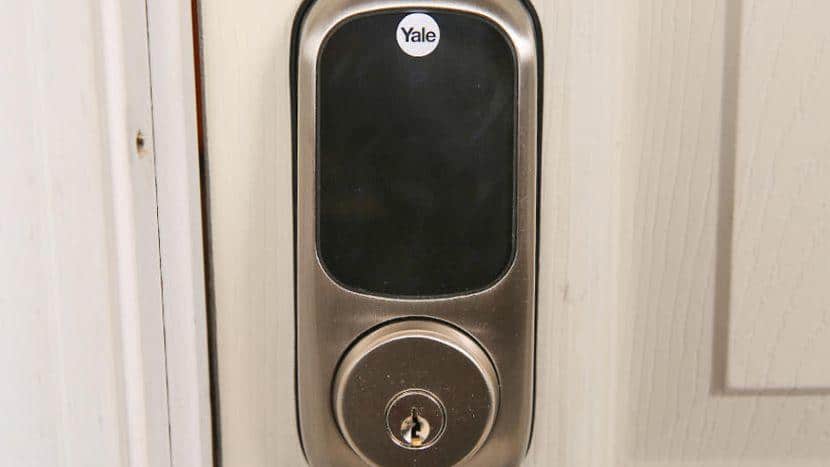Lock security is an essential aspect of keeping your home safe and secure. High-quality locks are the first line of defence against potential intruders, ensuring the safety of your loved ones and your belongings. One of the most popular and reliable locks on the market is the Yale lock.
Reasons for Changing a Yale Lock
There are several reasons why you might need to change a Yale lock. These include:
Lost or Stolen Keys
If you’ve lost your keys or suspect they’ve been stolen, it’s crucial to change your lock immediately. This will help prevent unauthorised access to your home, protecting your family and belongings.
Wear and Tear
Over time, locks can become worn and less effective. This can make it easier for criminals to break in or for the lock to fail entirely. Regularly inspect your Yale lock for signs of wear and replace it if necessary.
Moving into a New Home
When you move into a new home, it’s always a good idea to change the locks. This ensures that previous occupants or anyone who may have had access to the keys cannot enter your property.
Upgrading Security
If you’re looking to improve your home’s security, upgrading to a more advanced Yale lock can provide additional protection against break-ins.
Types of Yale Locks
Yale locks come in various types and designs, each offering different levels of security. Some of the most common types include:
Traditional Cylinder Locks
These are the most common type of Yale lock, featuring a key-operated cylinder mechanism. They can be easily replaced with a new cylinder to change the lock.
Smart Locks
Yale smart locks offer advanced security features, such as keyless entry and remote access. These locks can be controlled via a smartphone app, providing additional convenience and control over your home’s security.
Mortice Locks
Yale mortice locks are fitted into a door’s edge, providing a higher level of security than traditional cylinder locks. These locks require more effort to install but offer increased protection against forced entry.
Tools and Materials Needed
To change a Yale lock, you’ll need the following tools and materials:
Screwdrivers
A set of screwdrivers will be necessary for removing the old lock and installing the new one. Ensure you have a variety of sizes to accommodate different screw heads.
Replacement Lock
Choose a suitable Yale lock replacement that meets your security needs and is compatible with your door. Keep in mind the type of Yale lock you currently have (cylinder, smart, or mortice) when selecting a new one.
Optional: Lubricant
A lubricant, such as graphite or silicone spray, can help ensure smooth operation of your new lock. This is particularly useful if your old lock was prone to sticking or difficult to operate.
Step-by-Step Guide to Changing a Yale Lock
Follow these steps to change your Yale lock:
Removing the Old Lock
- Begin by opening the door and locating the screws holding the lock in place. These are usually found on the door’s edge or the faceplate of the lock.
- Using the appropriate screwdriver, remove the screws and gently pull the lock out of the door. Be cautious not to damage the door during this process.
- If you have a cylinder lock, you may need to remove the retaining screw that holds the cylinder in place. This is typically found beneath the latch bolt.
Installing the New Lock
- Start by inserting the new lock into the door, ensuring it is correctly aligned with the existing hole. If necessary, adjust the hole size or position to accommodate the new lock.
- Secure the lock in place using the provided screws, making sure not to overtighten them, as this may cause the lock to bind or become difficult to operate.
- For cylinder locks, install the new cylinder by inserting it into the lock body and securing it with the retaining screw.
- Attach the lock’s faceplate or strike plate to the door, aligning it with the latch bolt and using the provided screws.
Testing the New Lock
- Close the door and test the lock by turning the key or using the smart lock’s app, ensuring it operates smoothly and securely.
- Make any necessary adjustments to the lock or door to ensure proper function and security.
Tips for Choosing a High-Quality Replacement Lock
When selecting a new Yale lock, consider the following factors:
Security Ratings
Choose a lock with a high-security rating, which indicates the level of protection it provides against forced entry. The higher the rating, the more secure the lock.
British Standards Compliance
Look for Yale locks that comply with British Standards (BS3621 or BS8621), as these locks have been tested and approved for their security and durability.
Types of Keys
Consider the type of key that comes with the lock, such as traditional keys, electronic key cards, or keyless entry systems. Each type offers different levels of convenience and security.
Additional Features
Some Yale locks offer additional security features, such as anti-drill and anti-pick mechanisms, which can help protect against common burglary techniques.
Professional Help and Resources
Hiring a Locksmith
If you’re unsure about changing a Yale lock yourself or require assistance, consider hiring a professional locksmith. They can ensure proper installation and provide additional advice on improving your home’s security.
DIY Resources
For those looking to change their Yale lock independently, there are many online resources, including video tutorials and step-by-step guides, to help you through the process.
Conclusion
Changing a Yale lock is a straightforward process that can significantly improve your home’s security. By following the guidelines in this article, you can confidently replace your lock, ensuring the safety of your loved ones and belongings.
Remember to regularly inspect your Yale lock for signs of wear and tear and to perform maintenance as needed to keep it functioning optimally.

